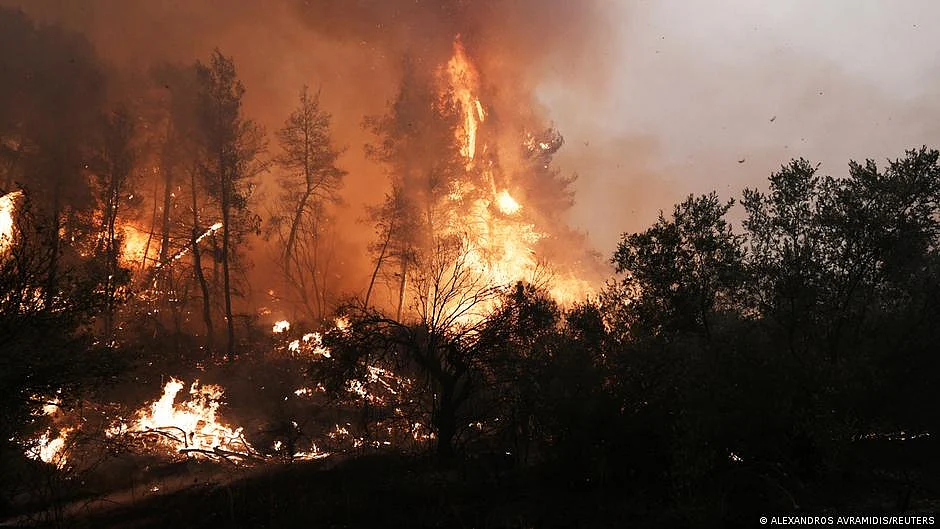Wildfires, noise pollution, disruptive timing of life cycles looming threats: UN report
These critical environmental issues, requiring greater attention, are highlighted in the new Frontiers Report published by the UN Environment Programme (UNEP) on Thursday

Wildfires are burning more severely and more often, urban noise pollution is growing into a global public health menace, and phenological mismatches -- disruptions in the timing of life-cycle stages in natural systems -- are causing ecological consequences.
These critical environmental issues, requiring greater attention, are highlighted in the new Frontiers Report published by the UN Environment Programme (UNEP) on Thursday.
This is the fourth edition of the Frontiers Report, which was first published in 2016 with an alert to the growing risk of zoonotic diseases, four years before the outbreak of the Covid-19 pandemic.
"The Frontiers Report identifies and offers solutions to three environmental issues that merit attention and action from governments and the public at large," said UNEP Executive Director Inger Andersen.
"Urban noise pollution, wildfires and phenological shifts -- the three topics of this Frontiers report -- are issues that highlight the urgent need to address the triple planetary crisis of climate change, pollution and biodiversity loss," Andersen said.
The latest edition of the Frontiers Report, ‘Noise, Blazes and Mismatches: Emerging Issues of Environmental Concern', has been released days before the fifth session of the UN Environment Assembly (UNEA) resumes.
It says noise pollution in cities is a growing hazard to public health.
Unwanted, prolonged and high-level sounds from road traffic, railways, or leisure activities impair human health and well-being. This includes chronic annoyance and sleep disturbance, resulting in severe heart diseases and metabolic disorders such as diabetes, hearing impairment, and poorer mental health.
Noise pollution already leads to 12,000 premature deaths each year in the EU and affects one in five EU citizens. Acceptable noise levels are surpassed in many cities worldwide, including Algiers, Bangkok, Damascus, Dhaka, Ho Chi Minh City, Ibadan, Islamabad and New York.
Particularly affected are the very young, the elderly and marginalised communities near high traffic roads, and industrial areas and far from green spaces.
It is also a threat to animals, altering communications and the behaviour of various species, including birds, insects and amphibians.
According to the report, dangerous wildfire weather is projected to get worse.
Each year, between 2002 and 2016, an average of about 423 million hectares or 4.23 million sq km of the earth's land surface -- an area about the size of the entire European Union – burnt, becoming more common in mixed forest and savannah ecosystems.
An estimated 67 per cent of the annual global area burnt by all types of fires, including wildfires, was in the African continent.
Dangerous wildfire weather conditions are projected to become more frequent and intense and to last longer, including in areas previously unaffected by fires.
Extremely intense wildfires can trigger thunderstorms in smoke flumes that aggravate fires through erratic wind speeds and generate lightning that ignites other fires far beyond the fire front, a hazardous feedback loop.
This is due to climate change, including hotter temperatures and drier conditions with more frequent droughts. Land-use change is another risk factor, including commercial logging and deforestation for farms, grazing land, and expanding cities.
A further cause for the proliferation of wildfires is the aggressive suppression of natural fire, which is essential in some natural systems to limit the amounts of combustible material, and inappropriate fire management policies that exclude traditional fire management practices and indigenous knowledge.
The report calls for greater investment in reducing the risks of wildfires; development of prevention and response management approaches that include vulnerable, rural, traditional and indigenous communities; and further refinements in remote sensing capabilities, such as satellites, radar and lightning detection.
The report says climate change disrupts natural rhythms in plants and animals.
Phenology is the timing of recurring life cycle stages, driven by environmental forces, and how, within an ecosystem, interacting species respond to the changing conditions.
Plants and animals in terrestrial, aquatic and marine ecosystems use temperature, day-length or rainfall as cues for when to unfold leaf, flower, bear fruit, breed, nestle, pollinate, migrate or transform in other ways.
Follow us on: Facebook, Twitter, Google News, Instagram
Join our official telegram channel (@nationalherald) and stay updated with the latest headlines
